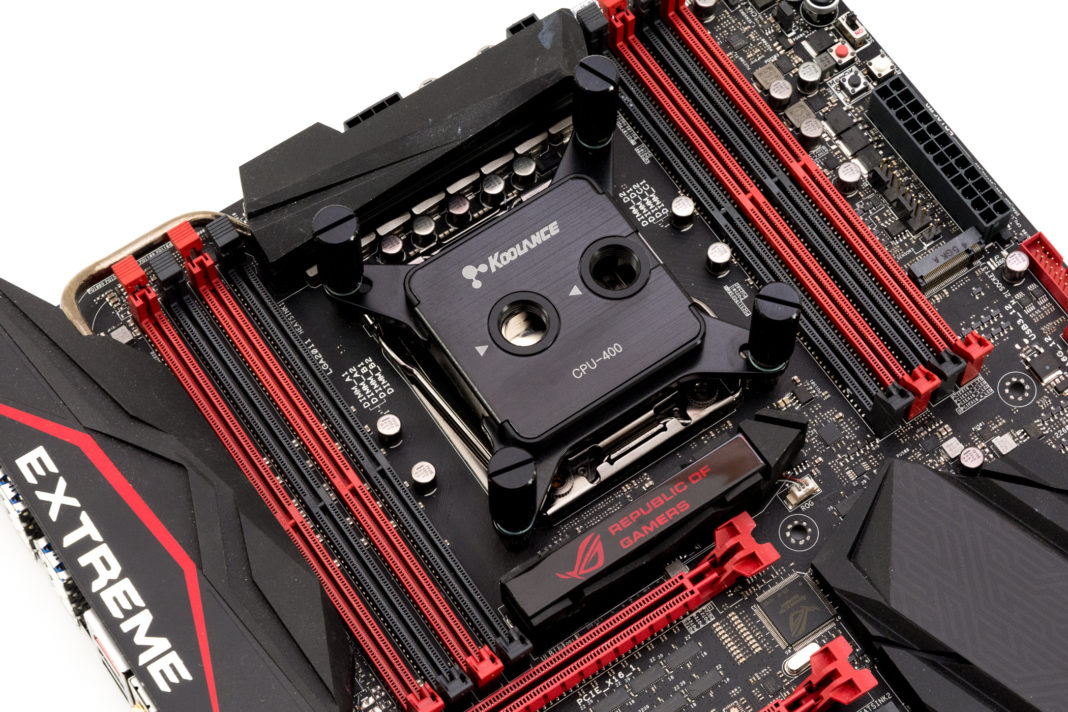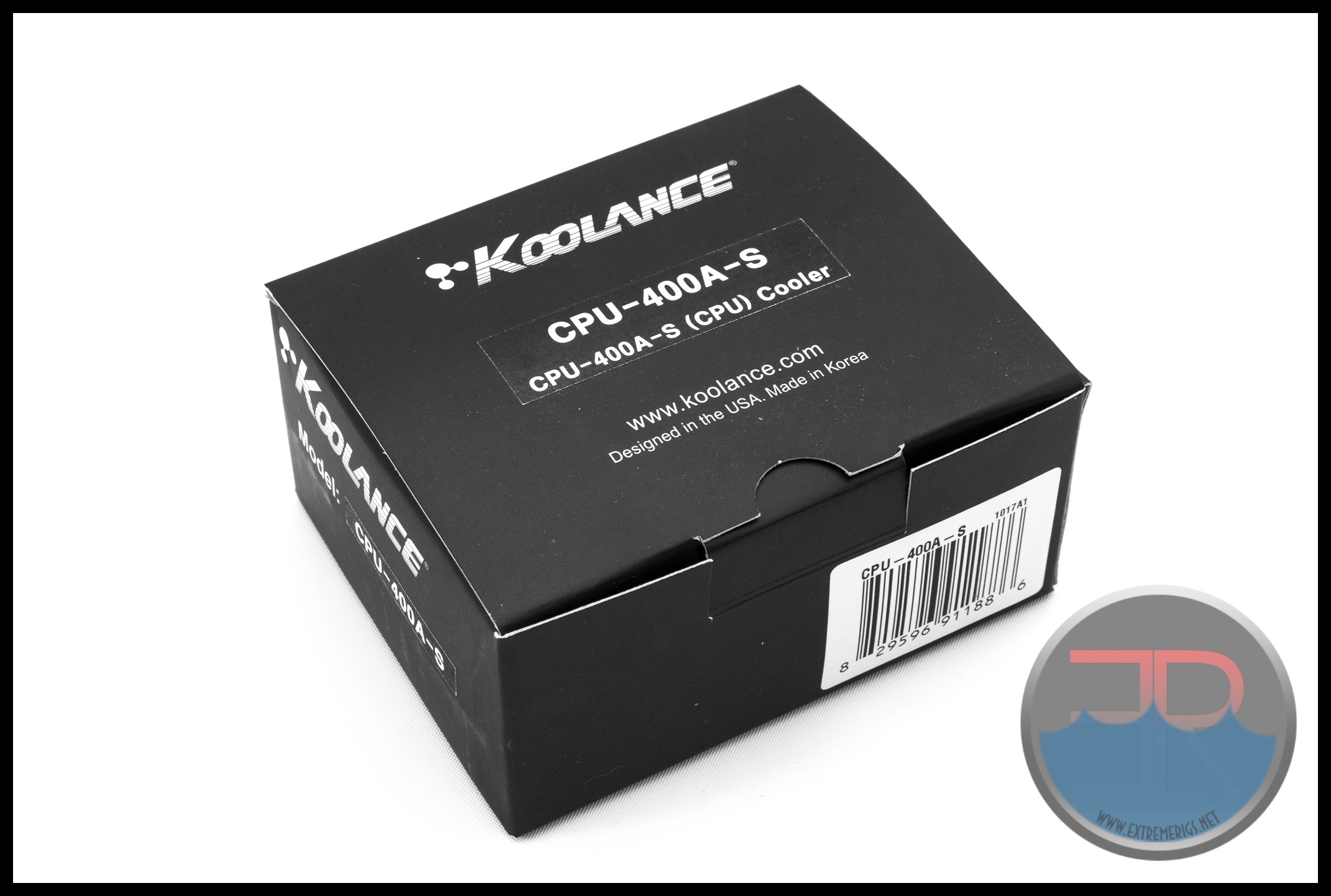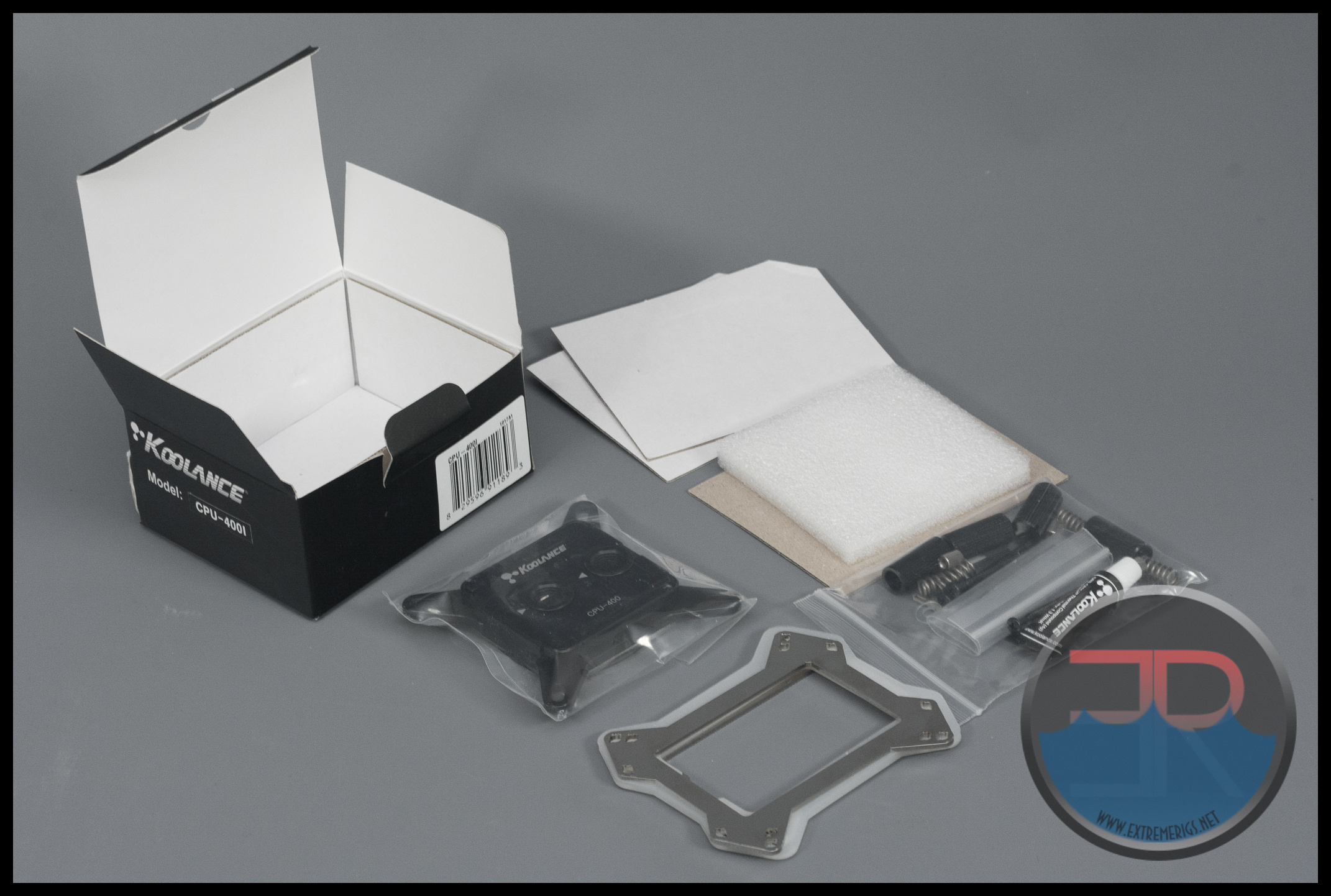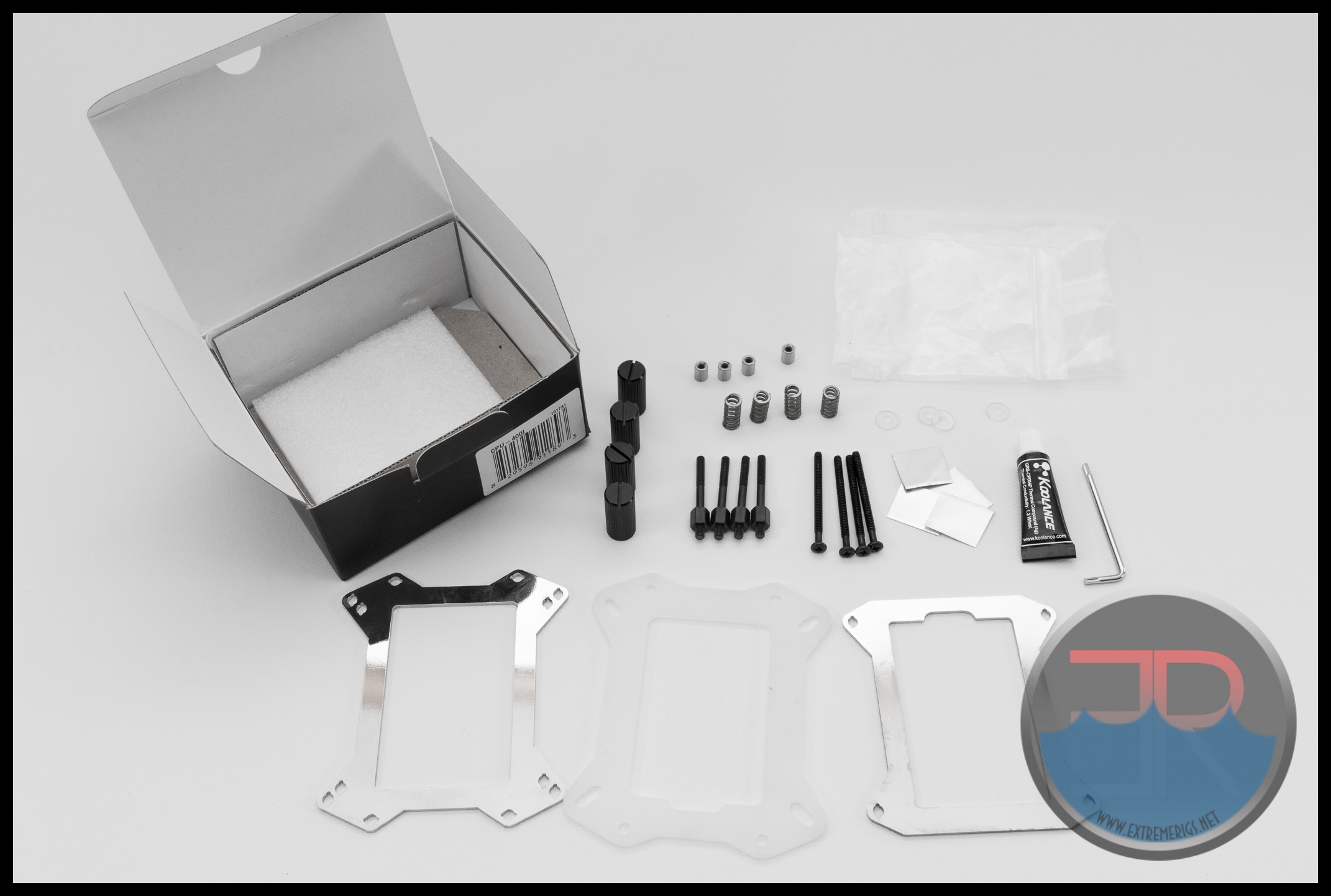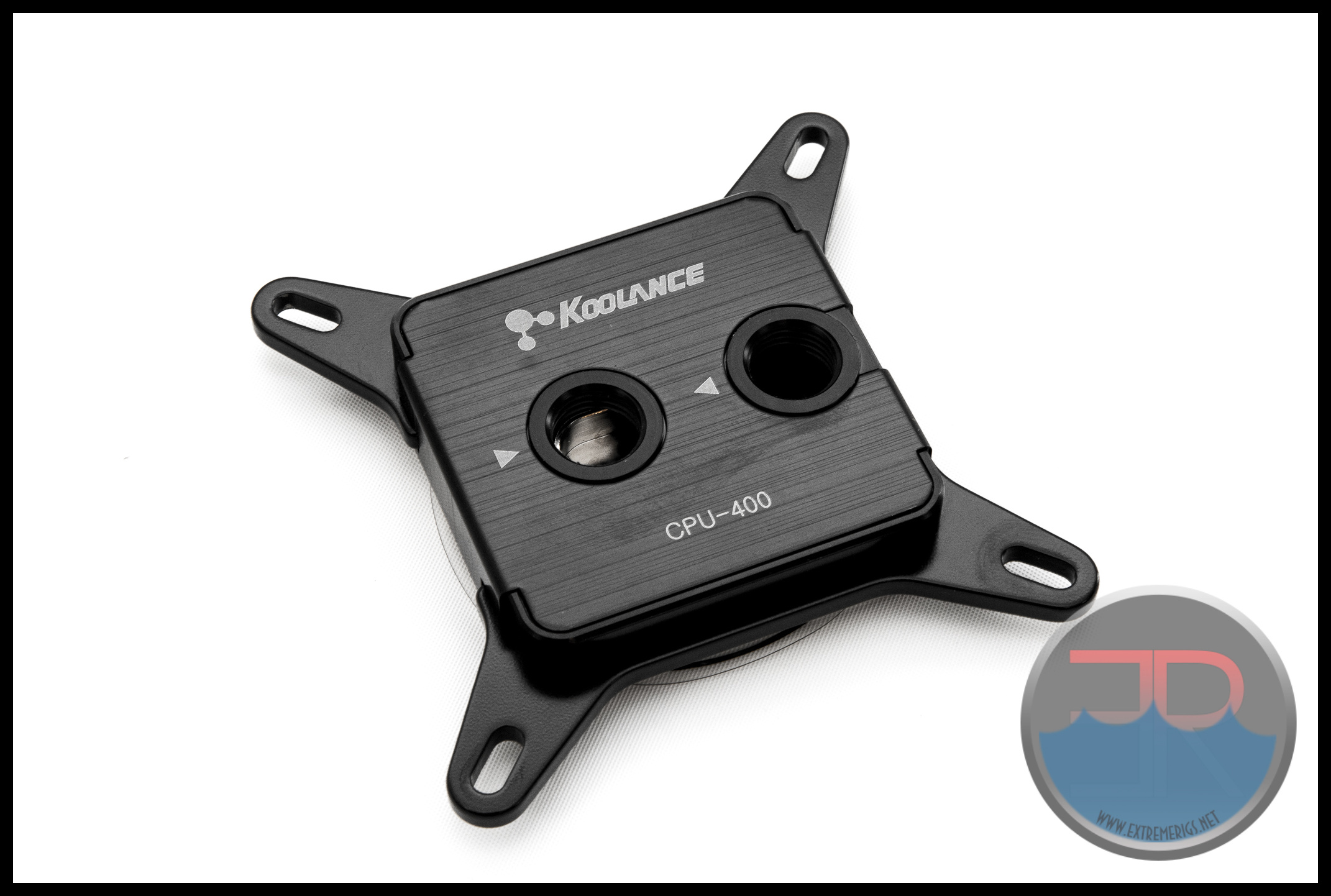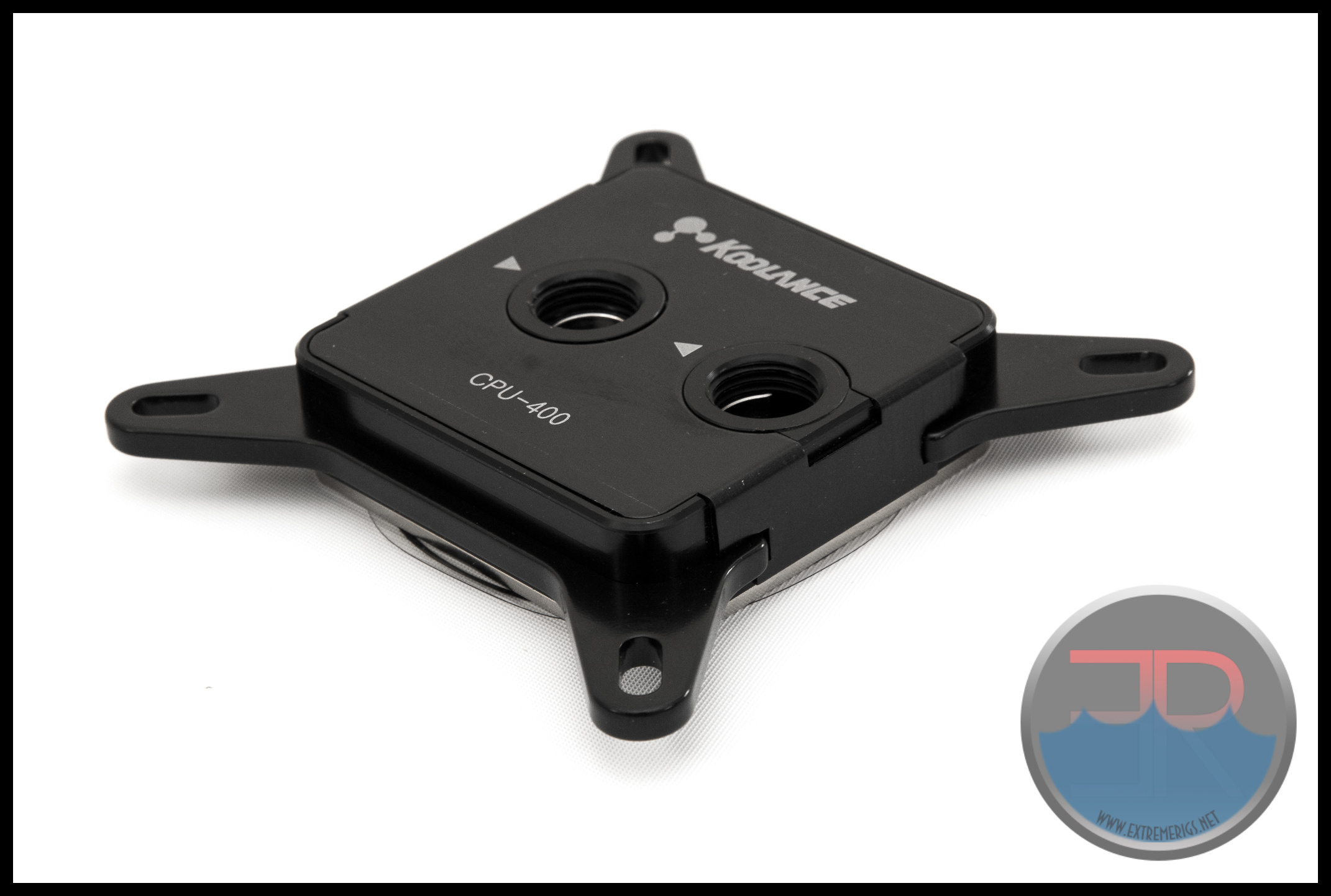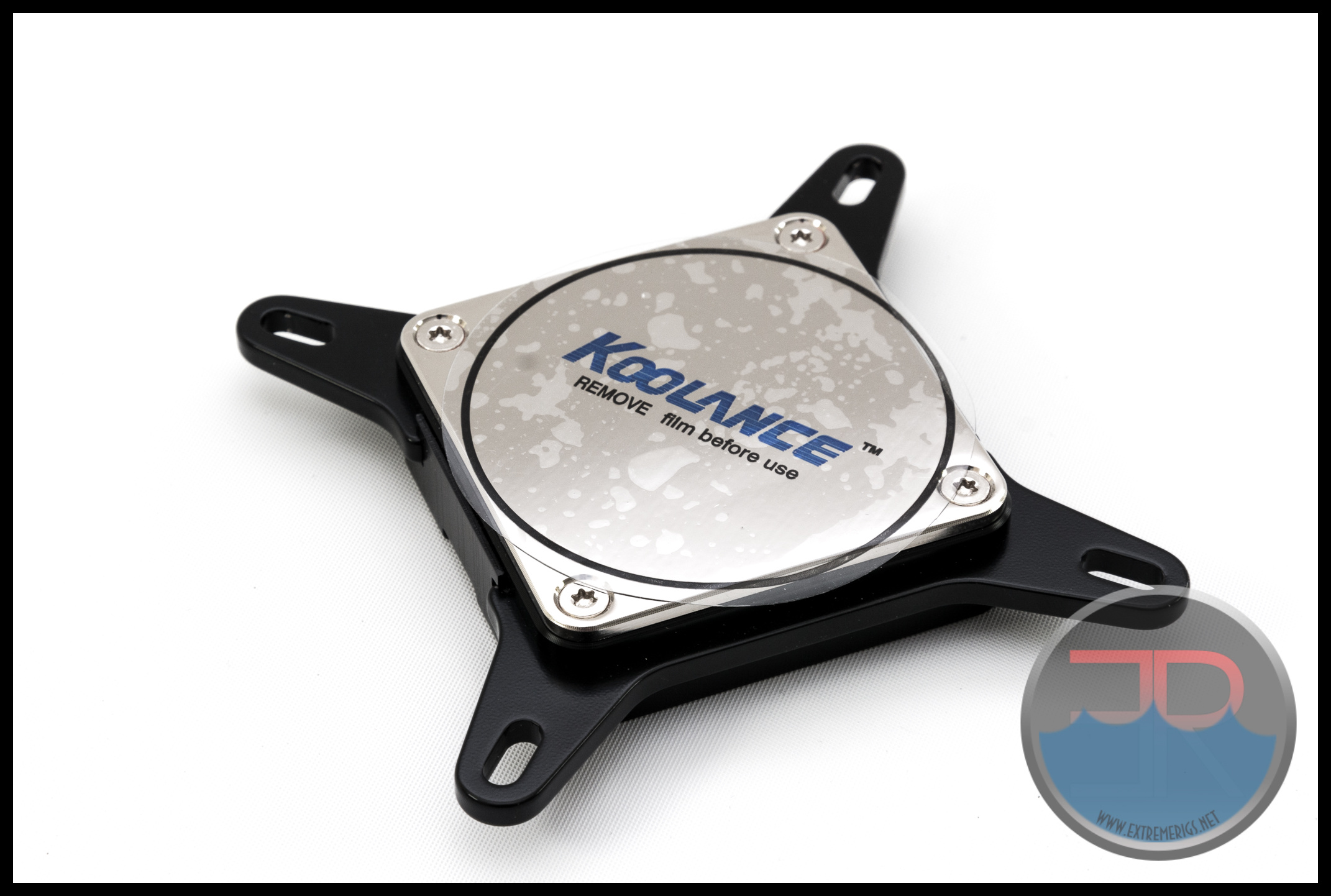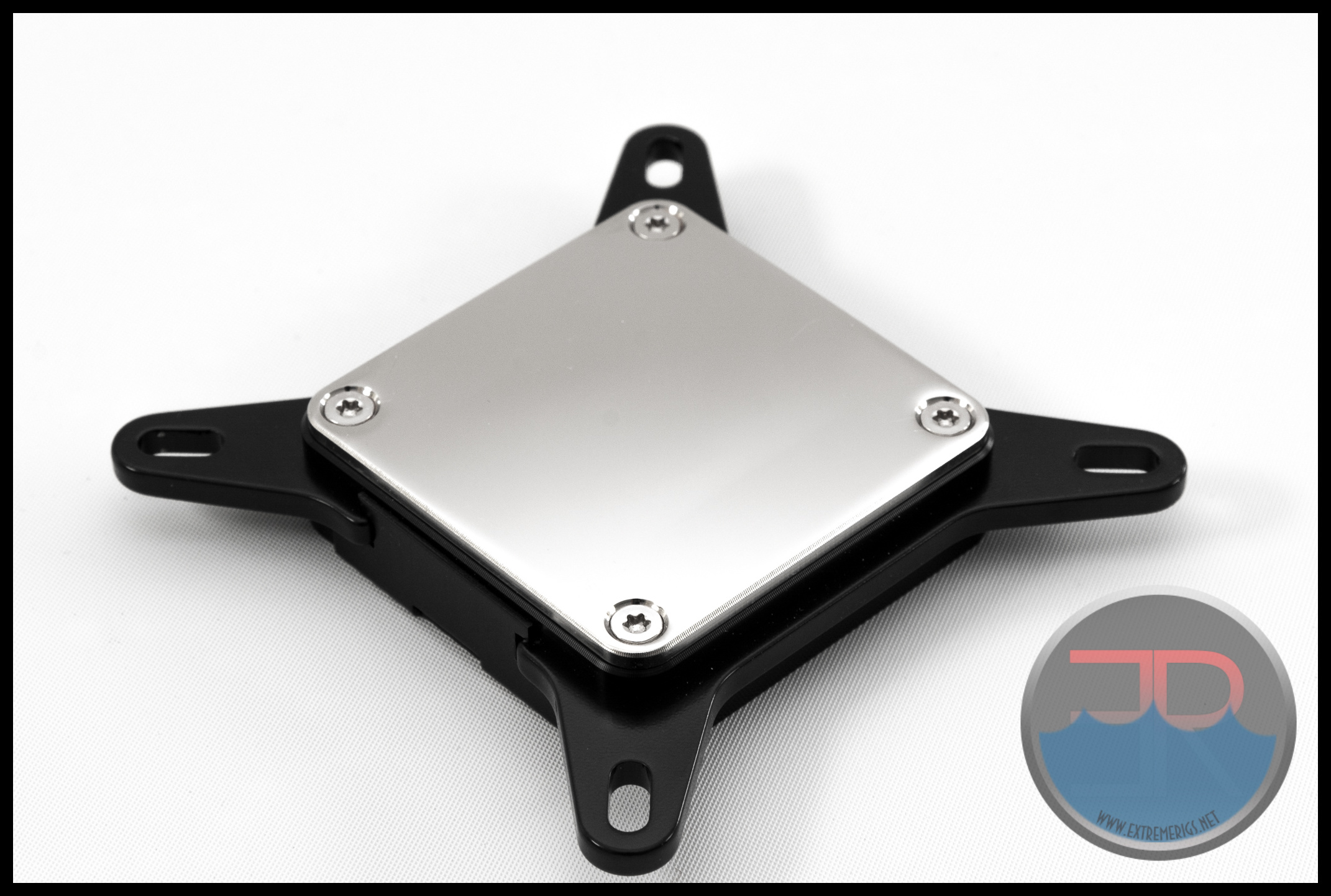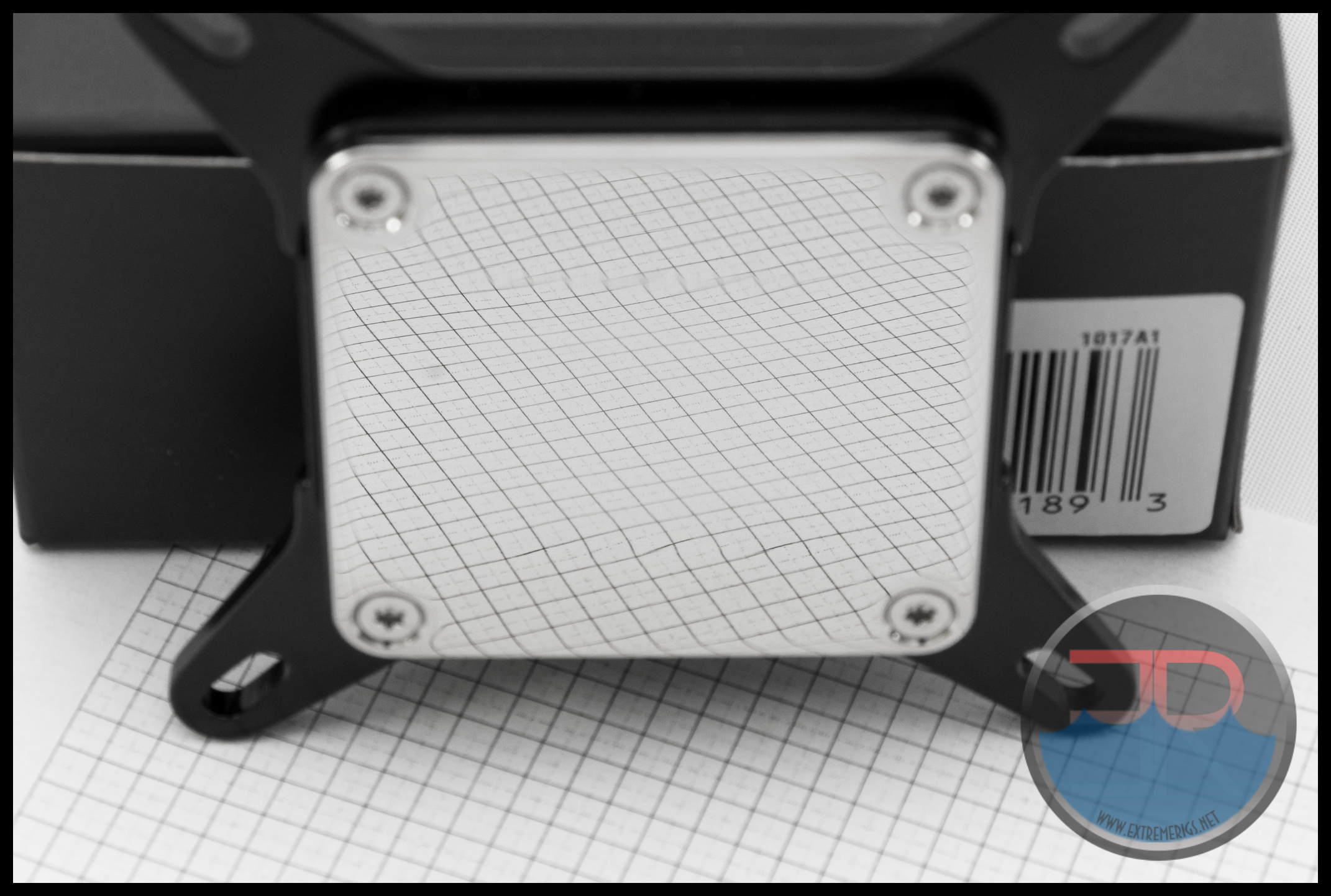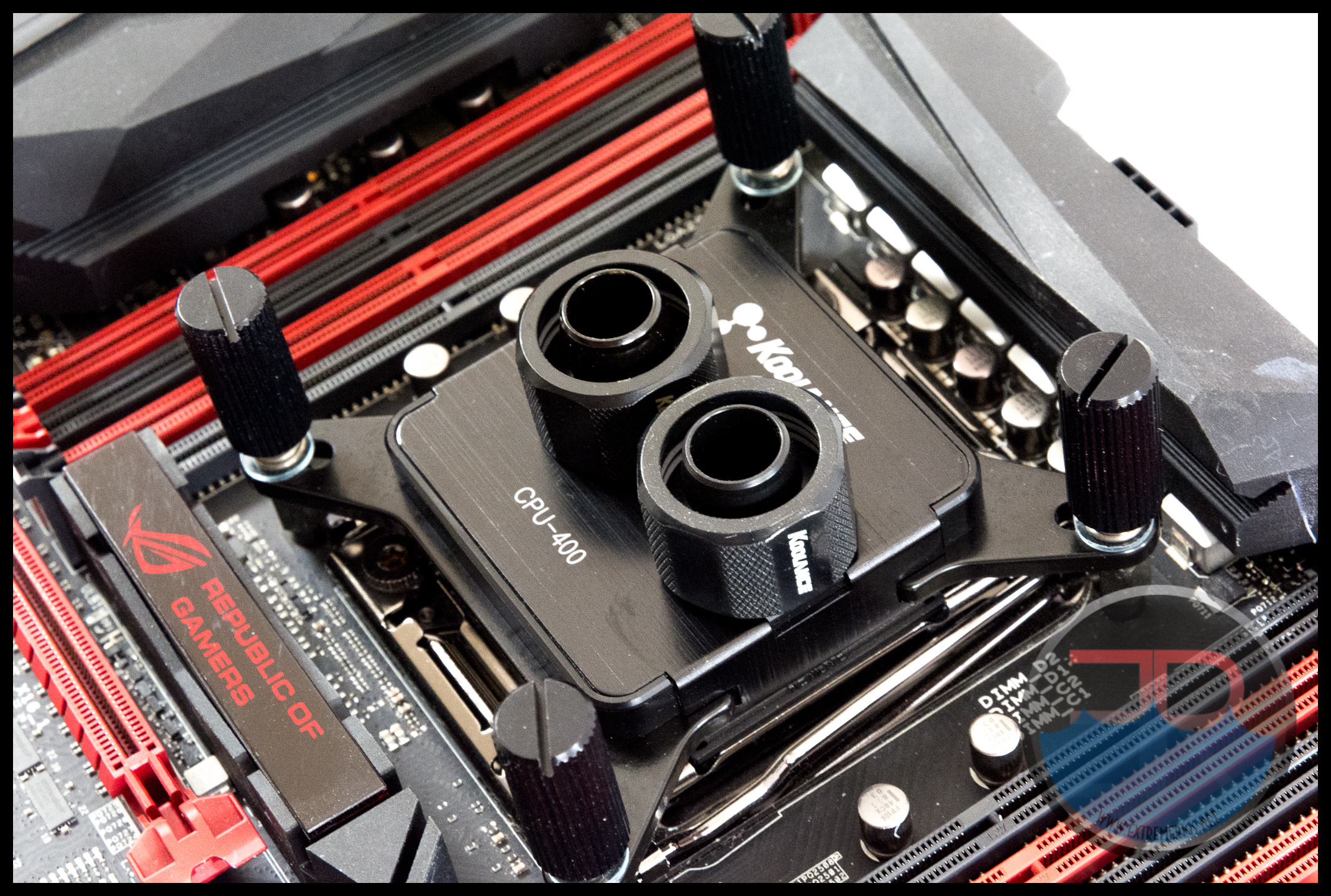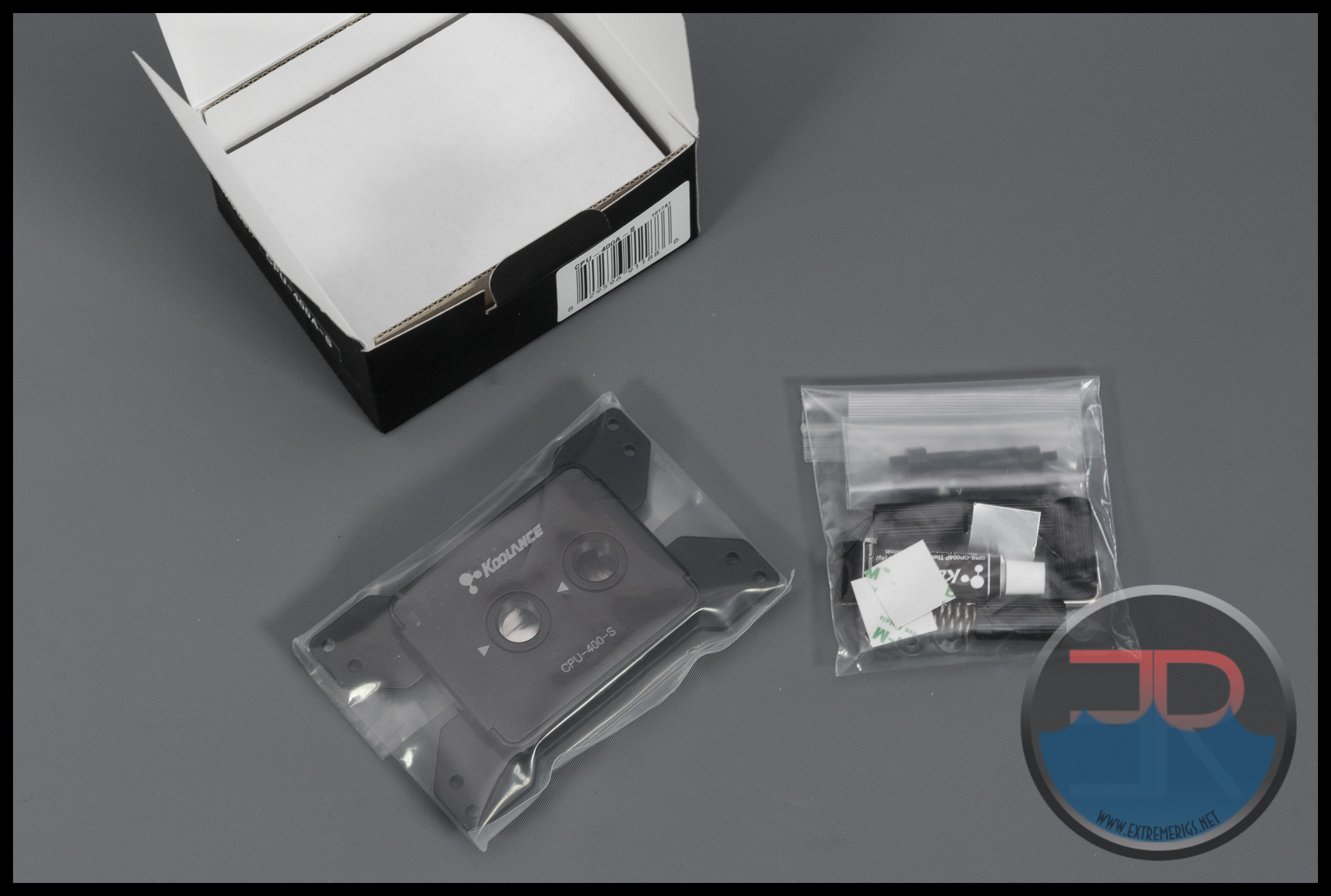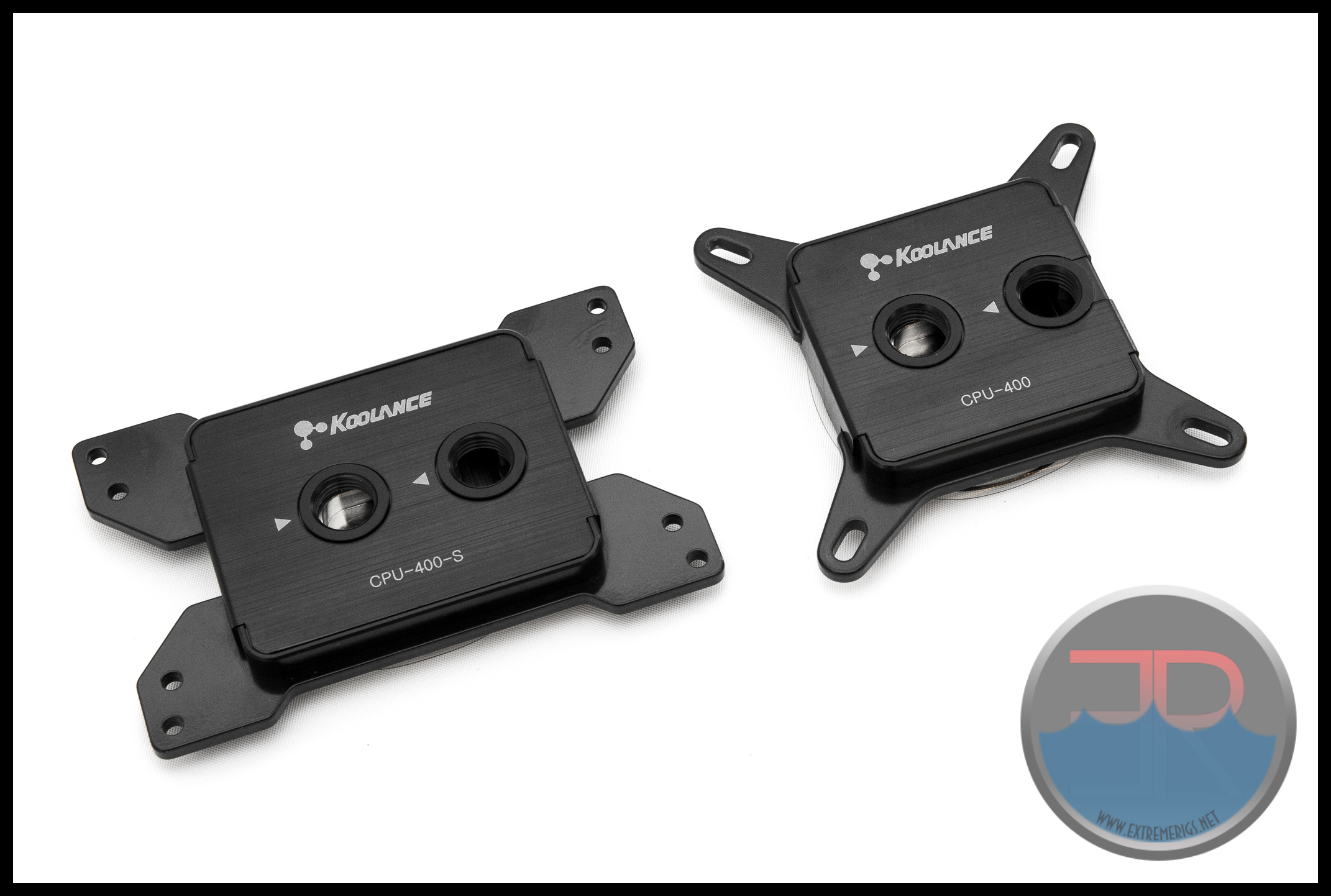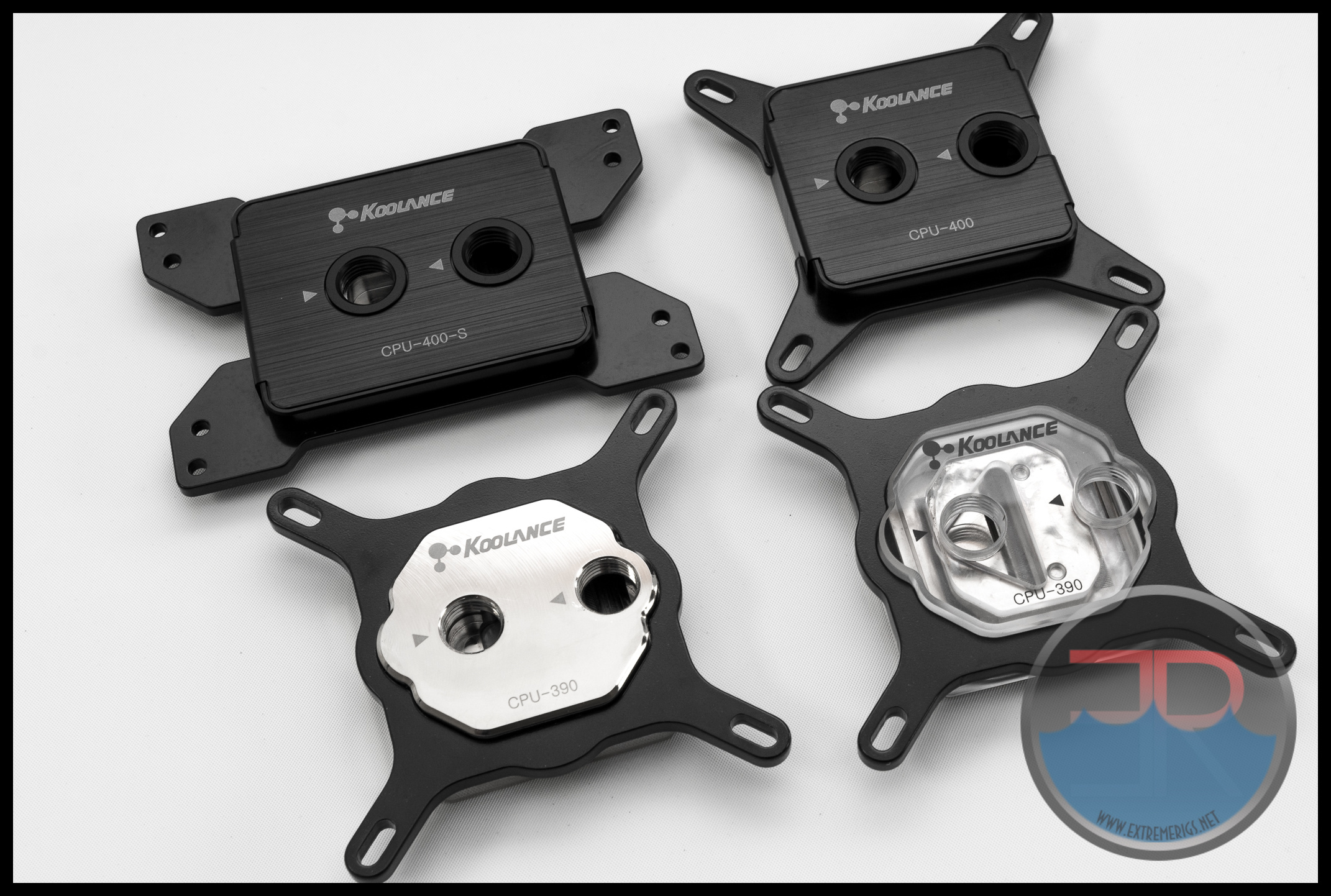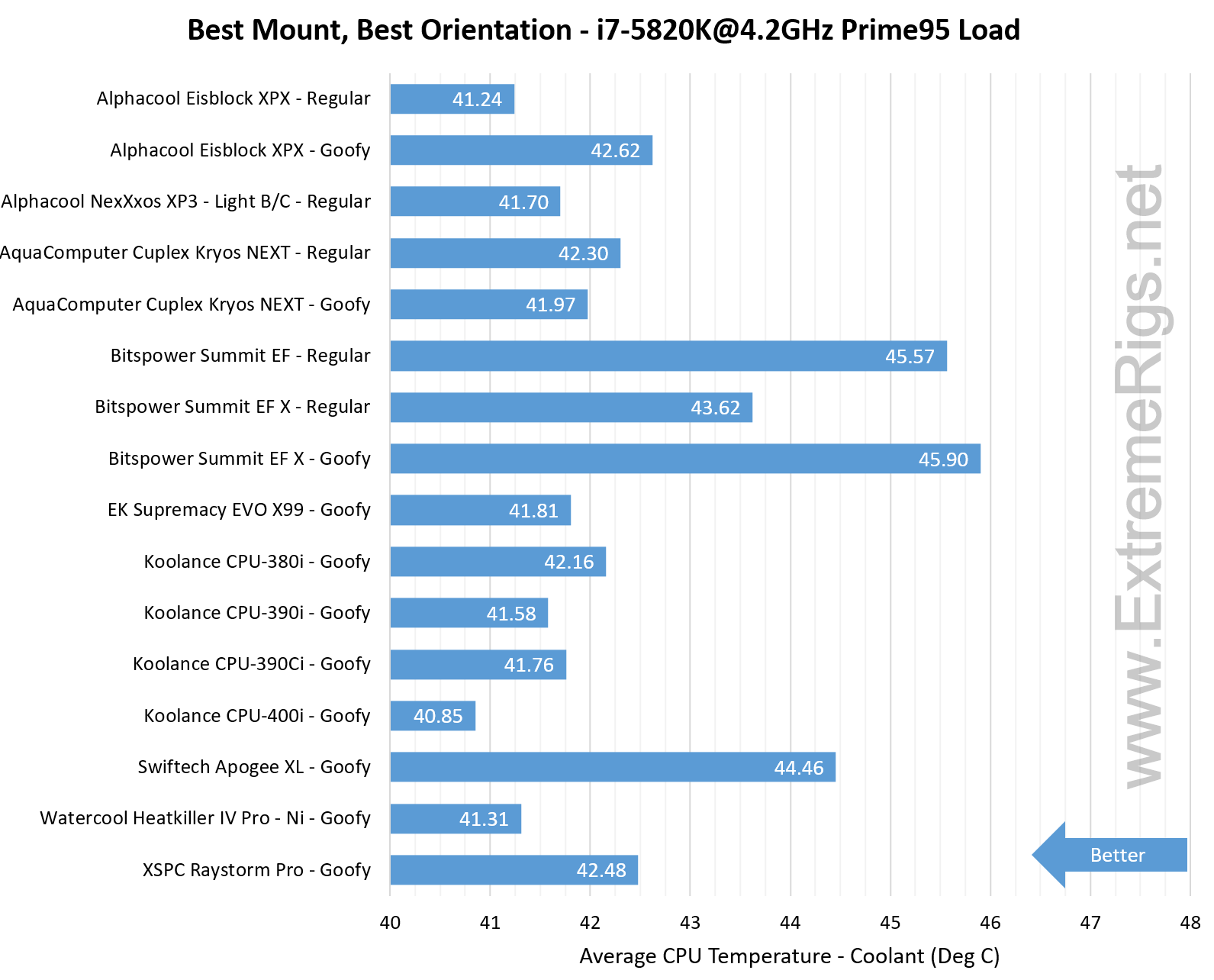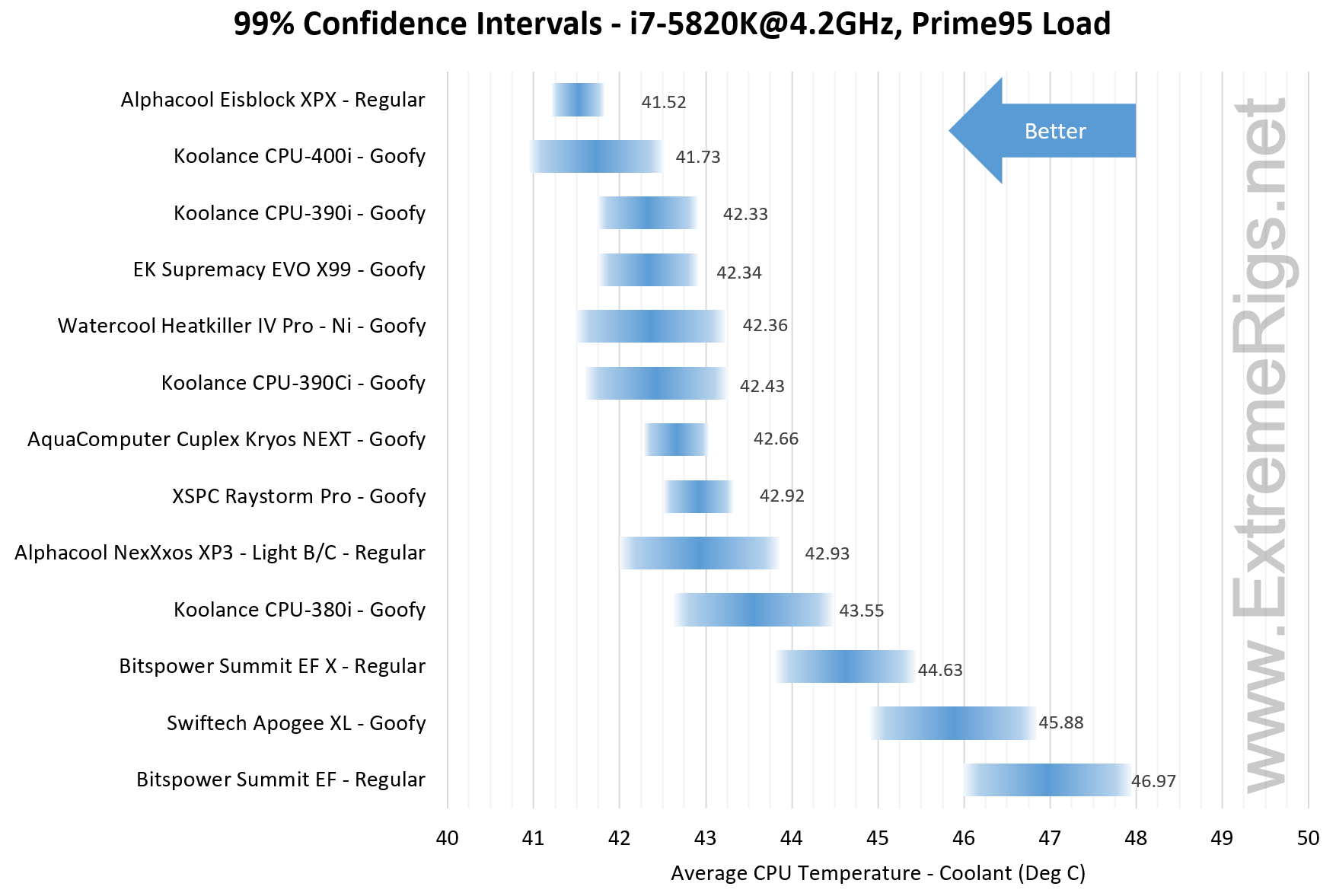Koolance have launched a new CPU water block – the CPU-400. Koolance’s older CPU-380 block lasted for quite a few years as the dominator in our charts that couldn’t be beaten for many of those years. About a year and a half ago the CPU-390 was released and improved performance. However since then there have been a bunch of new blocks from the competition that compete at a similar level. It was no surprise then that Koolance decided to launch a new CPU block more quickly this time around.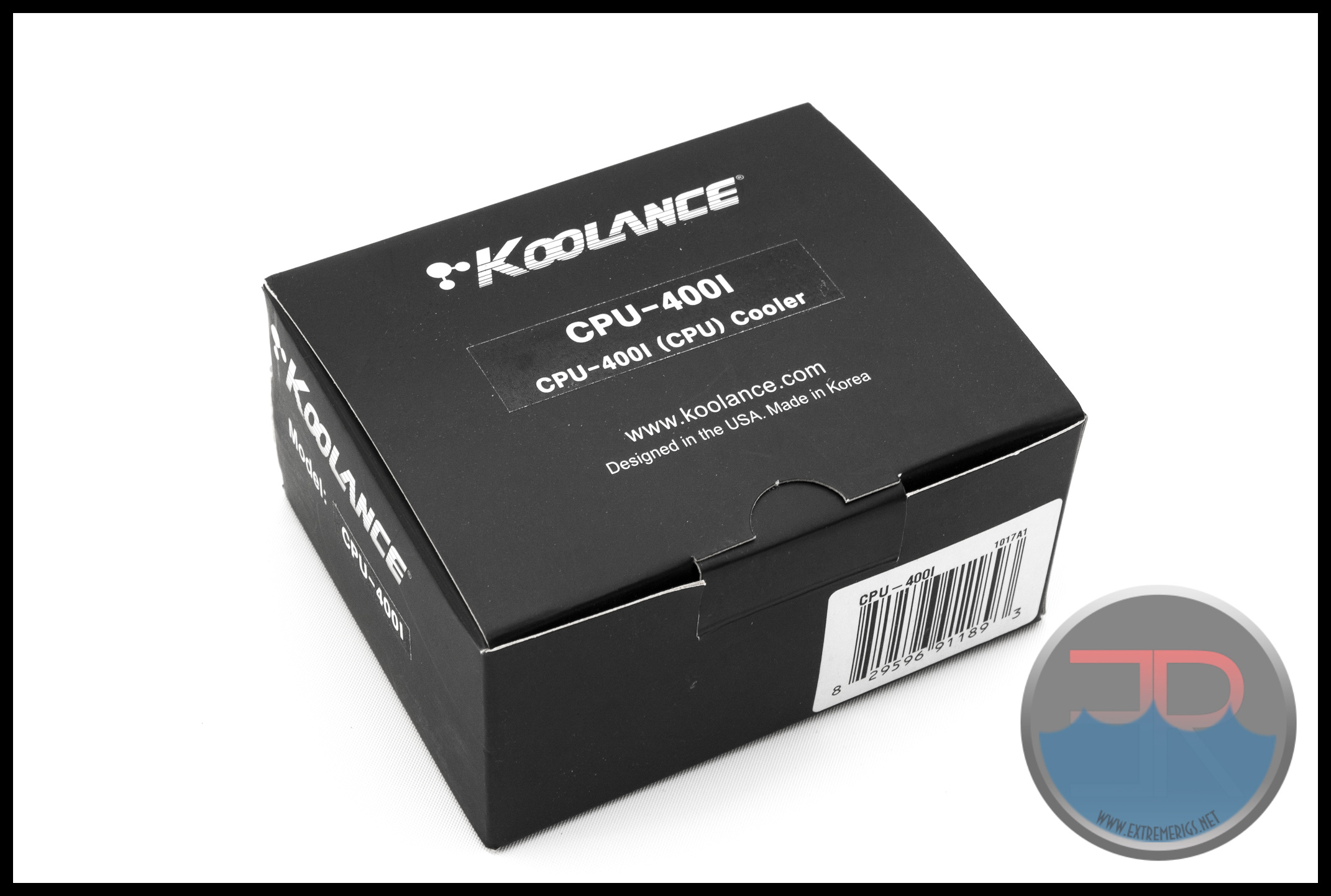 Unsurprisingly Koolance added another 10 to the model number and we now have the CPU-400. Packaging is identical except for the upgraded sticker.
Unsurprisingly Koolance added another 10 to the model number and we now have the CPU-400. Packaging is identical except for the upgraded sticker.
Koolance were kind enough to also send us the threadripper version:
Can you tell the difference? Let’s start off with unboxing the Intel version (CPU-400I):
The packaging is standard for Koolance as are the supplied backplates and accessories which as usual support all recent Intel CPUs. However the mounting nuts and standoffs are different this time around:
The old nuts would let the screw thread protude through the top and that frankly looked a little ugly. These new nuts lose the ability to be tightened with a wrench and instead have ribs for the comfort of your fingers as well as a single slot on top for a screwdriver if needed.
The CPU block consists of a nickel plated copper base, a POM top with a black “brushed” finish on a metal plate. The design is relatively simply and should please those who prefer subtlety over flashing LEDs.
The metal plate folds around the top to clamp underneath.
Underneath the block we see the nickel plated base is secured with 4 torx head screws. This is identical to previous designs and we have no issue with that. The tool required to open the block is supplied in the accessory bag. The base is protected during shipping with a plastic sticker:
The plating is gorgeous and a very nice mirror finish:
By looking at the reflection we can get a feel for the shape of the “bow” of the block. We can make out a large rectangular area in the center that is surrounded by distortion. If this area is able to make good contact with the CPU then performance may be good.
The mounting bracket is extremely sturdy. We suspect it’s powder coated steel and we expect zero flex from it.
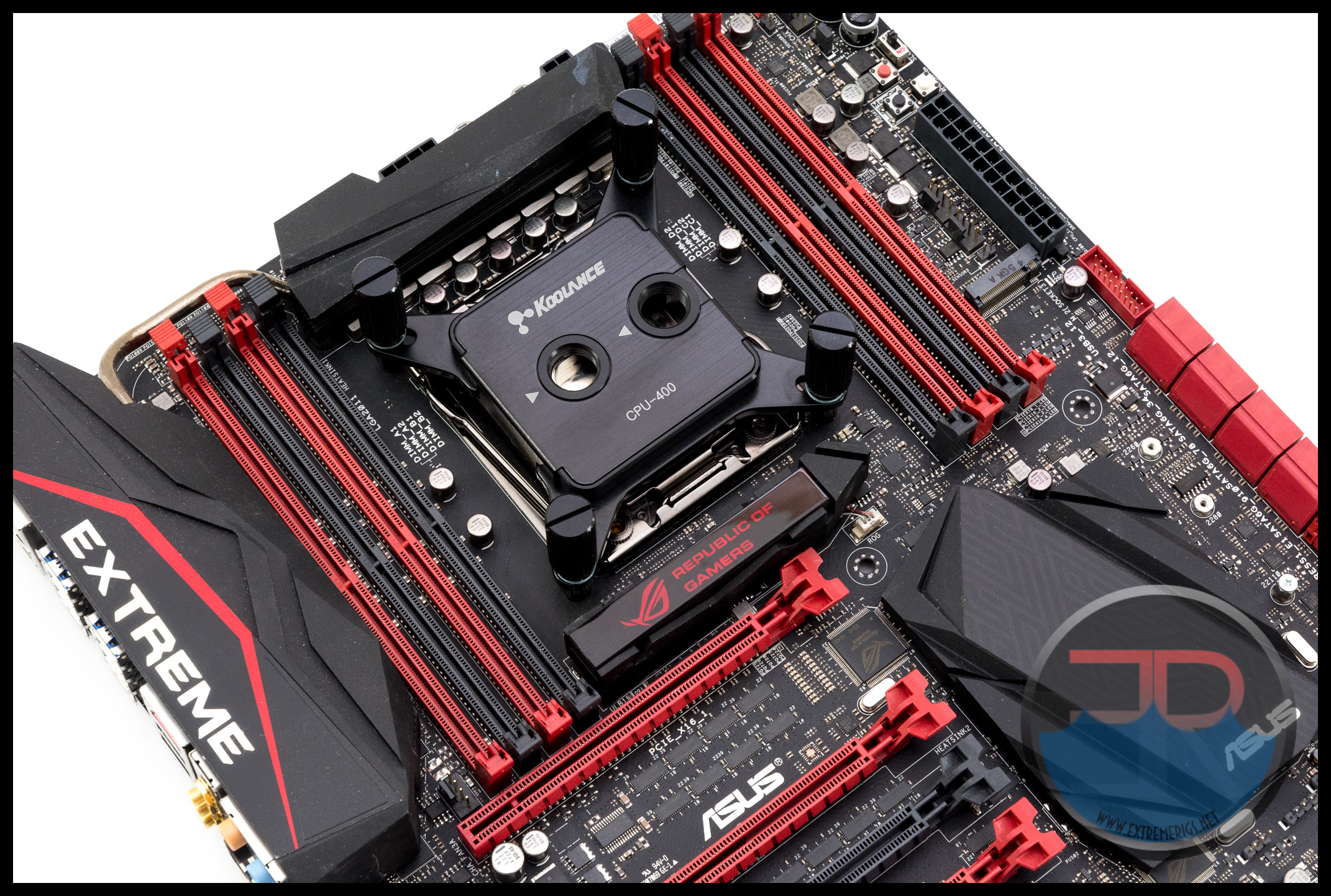 The block is quick and easy to mount. The simple black color scheme should go with any motherboard. The ports are well enough spaced that Koolance’s large 3/4″ OD fittings have no problem fitting:
The block is quick and easy to mount. The simple black color scheme should go with any motherboard. The ports are well enough spaced that Koolance’s large 3/4″ OD fittings have no problem fitting:
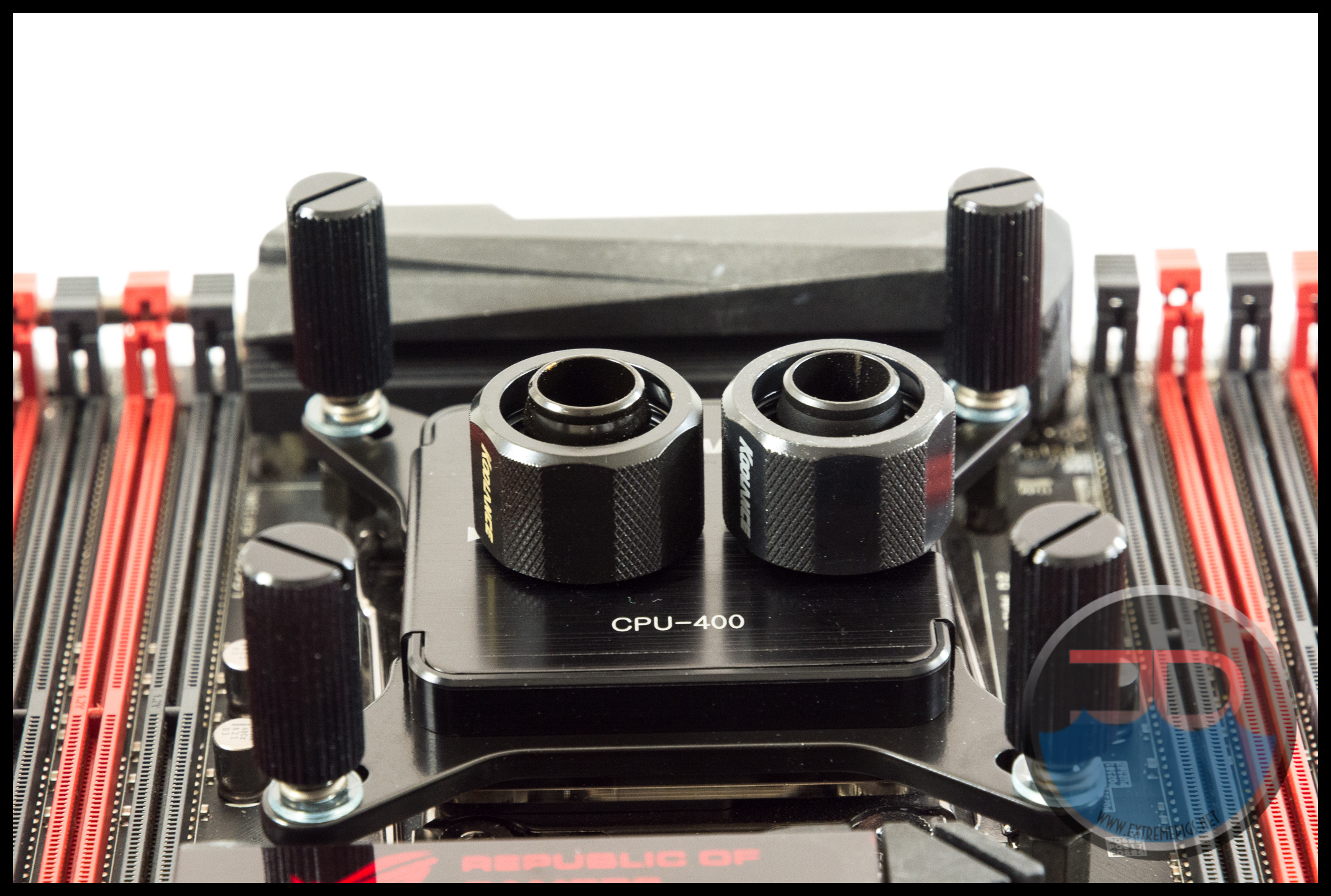 This photo also shows just how massive those thumbscrews are. Personally I think they could have been shrunk down a little. I find that is quite disruptive to the aesthetic flow of a build and was quite a fan of AquaComputer’s low profile mount on it’s most recent block.
This photo also shows just how massive those thumbscrews are. Personally I think they could have been shrunk down a little. I find that is quite disruptive to the aesthetic flow of a build and was quite a fan of AquaComputer’s low profile mount on it’s most recent block.
Of course the proof will be in the thermal numbers (see below for initial results), but Koolance have always seemed to focus on performance so hopefully this block stays true to this path. The block is on the bench as this is written, so results should be coming soon. In the mean time let’s take a look at the Threadripper block.
As expected it’s a different shape and form factor to the Intel one:
The accessories are similar but fewer:
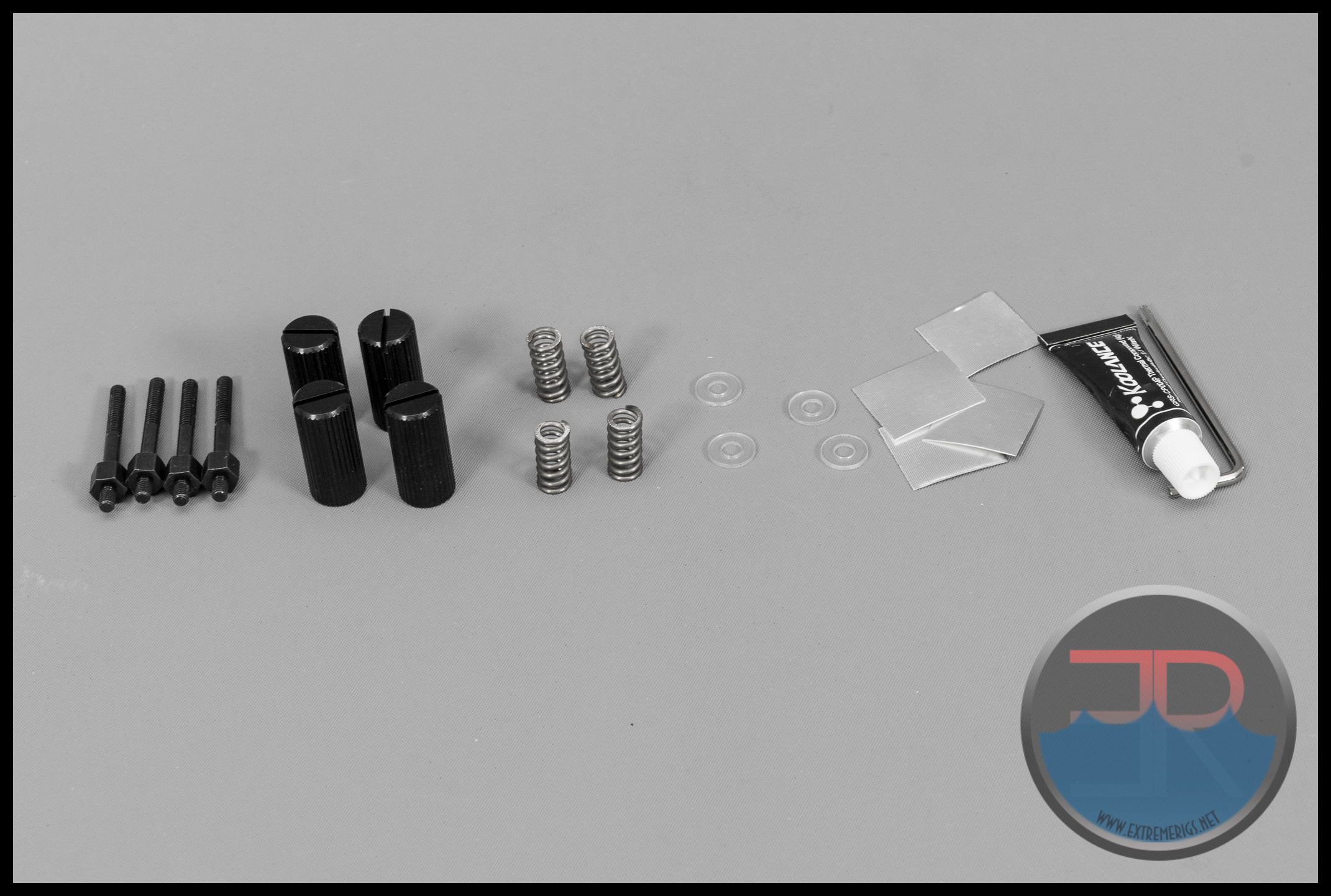 The design aesthetically is identical with the proportions stretched:
The design aesthetically is identical with the proportions stretched:
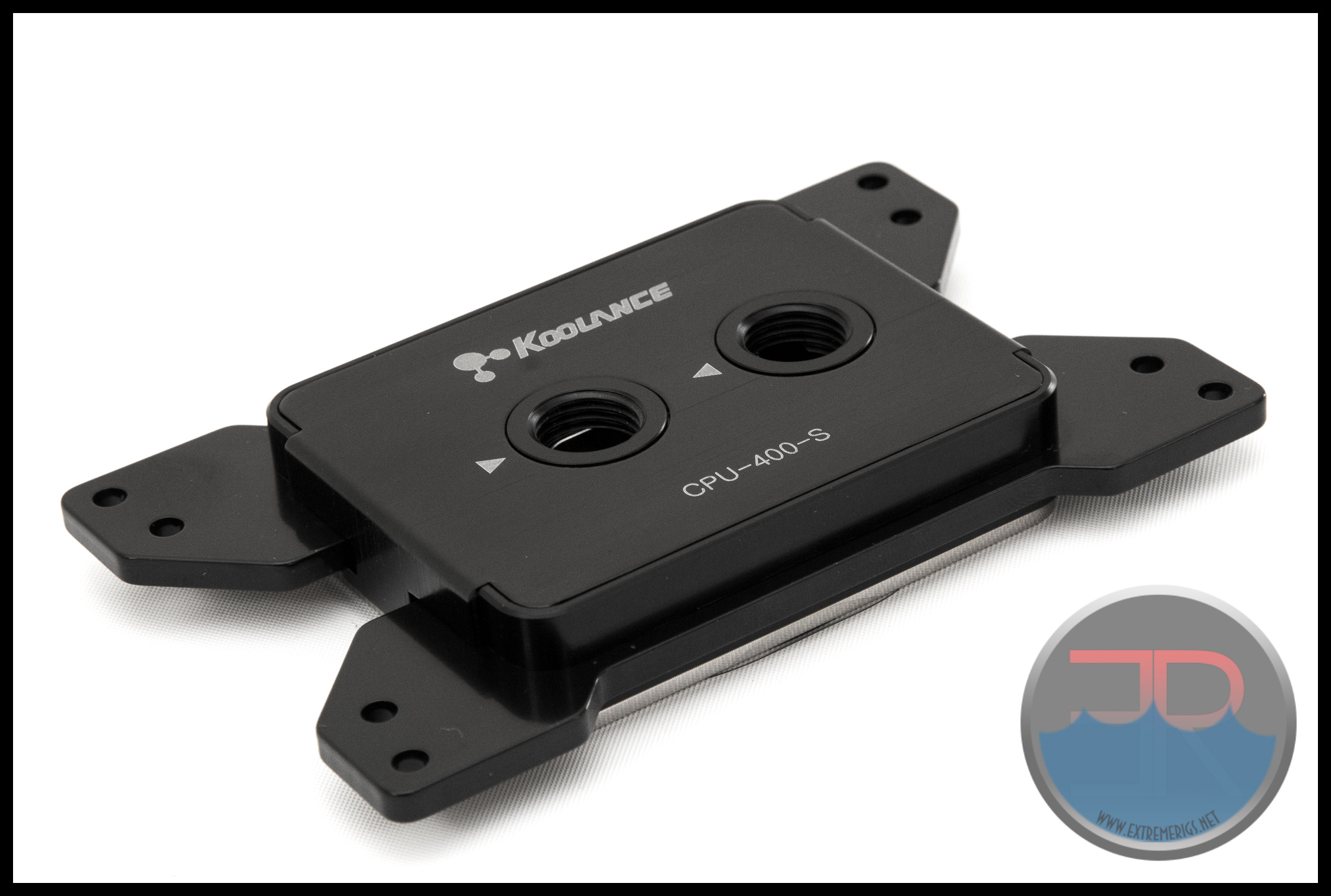 The baseplate is large and we expect it to fully cover the IHS of Threadripper:
The baseplate is large and we expect it to fully cover the IHS of Threadripper:
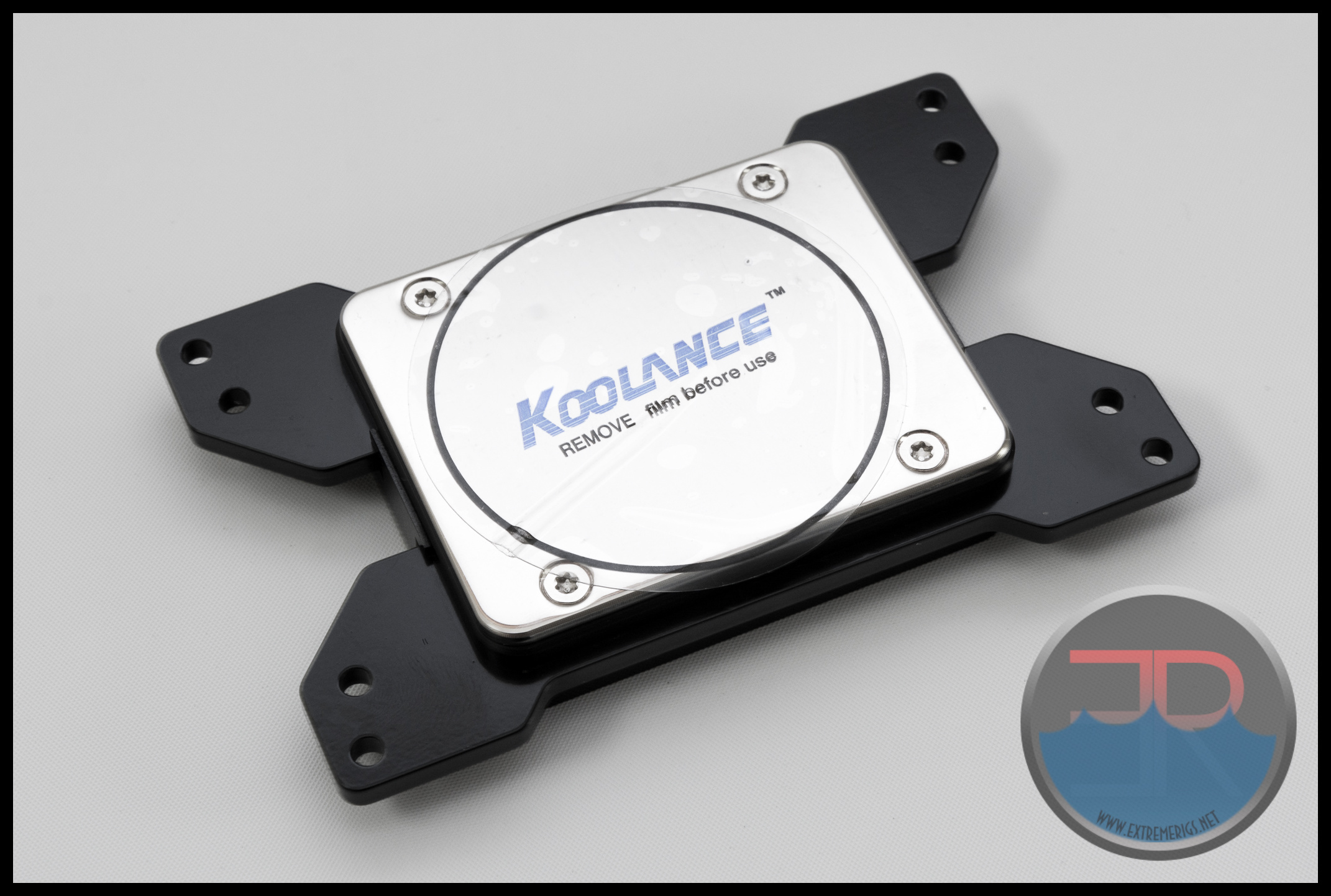 Like the intel version the finish is perfect. In the reflection test we see generally less bow and distortion than the CPU-400I:
Like the intel version the finish is perfect. In the reflection test we see generally less bow and distortion than the CPU-400I:
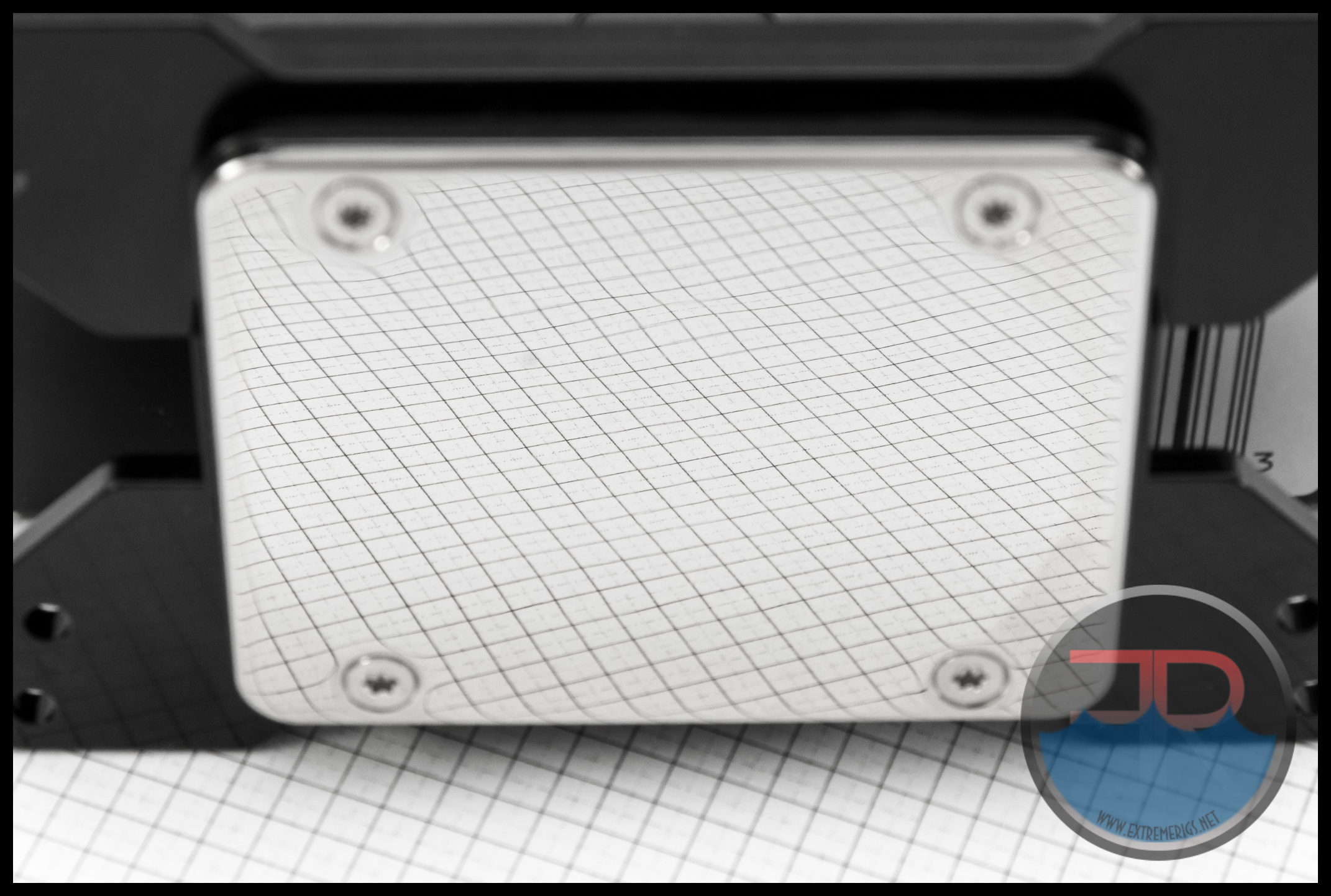 As we do not have our Threadripper bench up and running yet we decided to open up the block and have a look at the surface area of the baseplate. XSPC have made quite a fuss about our their baseplate and how almost the entire area of it has been machined for maximum surface area. EK on the other hand seems to have just taken their far smaller cooling core from the Supremacy EVO and put it on a larger plate. Testing from other websites, such as HardOCP claim that EK is 7C behind XSPC perhaps because of this reason.
As we do not have our Threadripper bench up and running yet we decided to open up the block and have a look at the surface area of the baseplate. XSPC have made quite a fuss about our their baseplate and how almost the entire area of it has been machined for maximum surface area. EK on the other hand seems to have just taken their far smaller cooling core from the Supremacy EVO and put it on a larger plate. Testing from other websites, such as HardOCP claim that EK is 7C behind XSPC perhaps because of this reason.
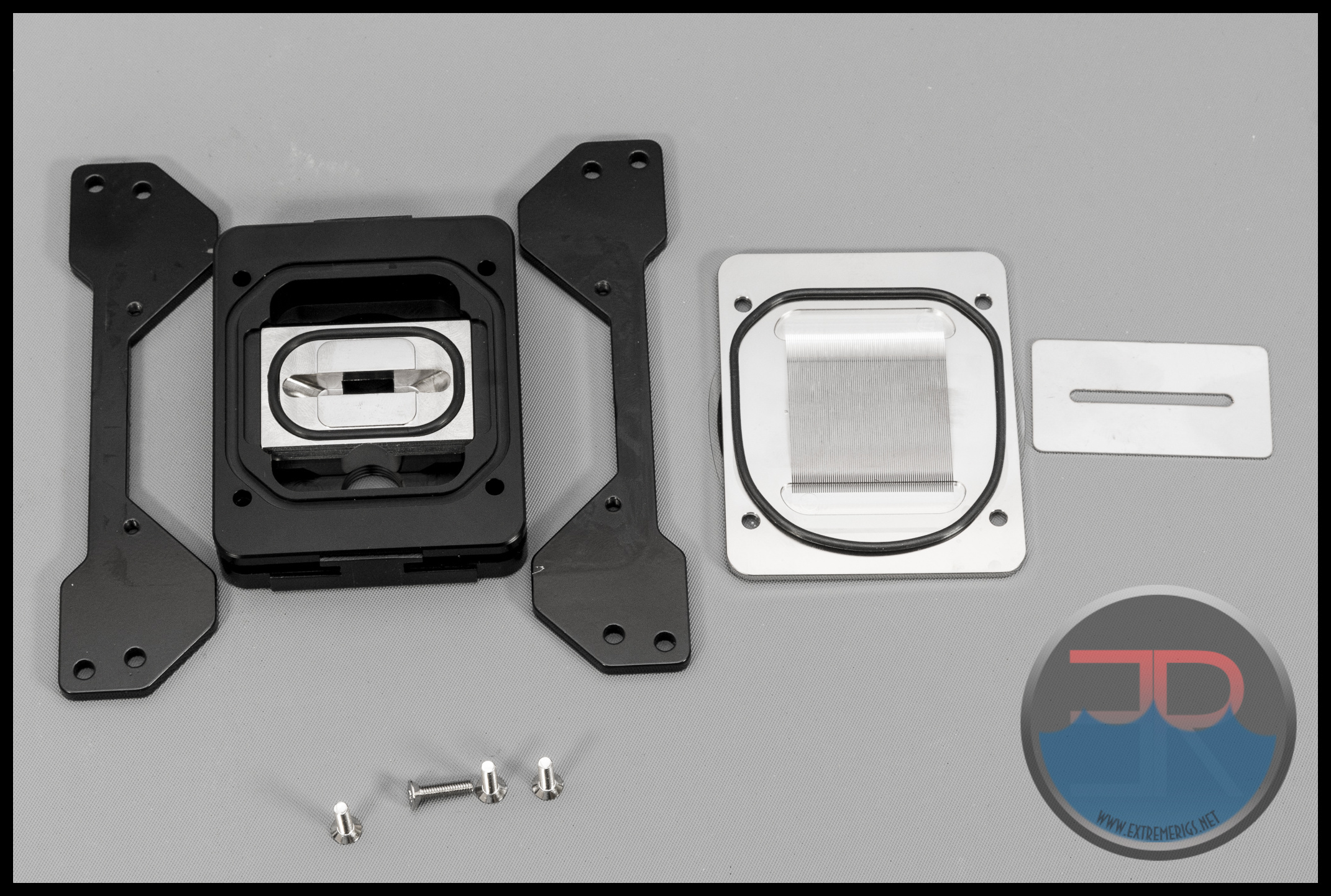 While Koolance seem to have quite a large area being used for cooling there is certainly unused space here and that is disappointing. Threadripper uses two active dies and two dummy dies in the four corners of the chip. Therefore the heat output of the CPU is concentrated in two corners of the chip unlike most CPUs where it would be centered. For this reason focussing on cooling the center of the coldplate may be the wrong strategy for optimum performance. Personally I wonder if a CPU block with two parallel mini jetplates (one for each active die) would be a better strategy.
While Koolance seem to have quite a large area being used for cooling there is certainly unused space here and that is disappointing. Threadripper uses two active dies and two dummy dies in the four corners of the chip. Therefore the heat output of the CPU is concentrated in two corners of the chip unlike most CPUs where it would be centered. For this reason focussing on cooling the center of the coldplate may be the wrong strategy for optimum performance. Personally I wonder if a CPU block with two parallel mini jetplates (one for each active die) would be a better strategy.
Taking a closer look at the coldplate we can see that the machining of the channels leaves them very narrow indeed:
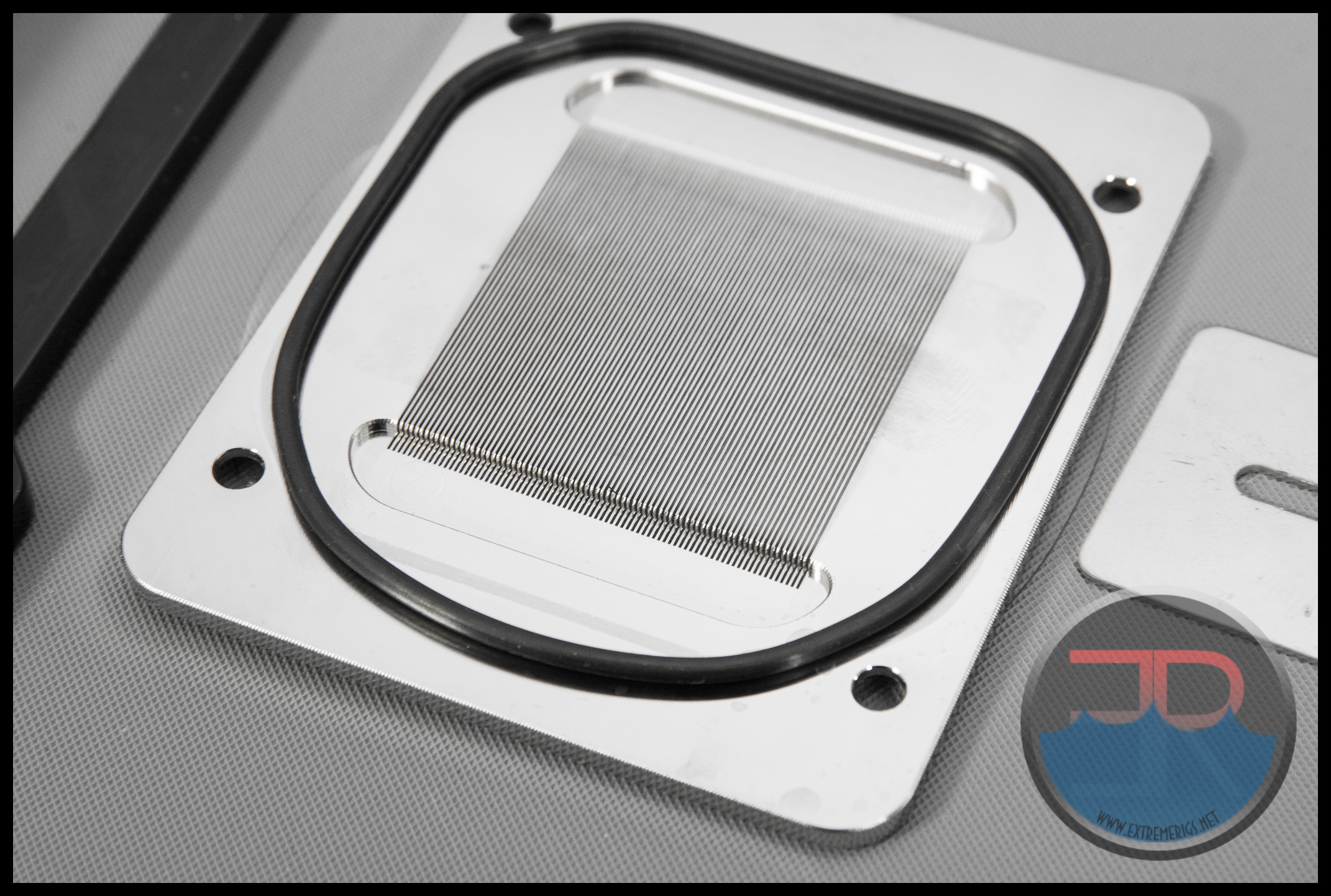 The finer the channels the more surface area which is a good thing, however there are many more variables that it is not always that simple. At first glance the channels look finer and longer than the CPU-390, but we will need to measure them to be sure.
The finer the channels the more surface area which is a good thing, however there are many more variables that it is not always that simple. At first glance the channels look finer and longer than the CPU-390, but we will need to measure them to be sure.
So that’s it for now til we get some actual data. Just for reference here is a comparison with the old CPU-390 blocks:
Unlike the CPU-390 there will not be multiple versions of the blocks. So let’s now take a look at some thermal results.
I didn’t have time before I left for vacation to do both orientations of the block or flow measurements. But I did do the full six runs on what should be the best orientation based on the block channel direction:
The CPU-400 beats the old CPU-390 by 0.6-0.7C. The average is very close to the Alphacool block which has so many reasons not to like it such as not being serviceable. In fact if we look closer at the data we see that the CPU-400 actually has the best single result of all time beating Alphacool by 0.4C:
So why does the average get worse? Simply put the Alphacool block has very consistent mount to mount performance. All 6 mounts gave a standard deviation of 0.3C vs 1C for the Koolance block. If we look at 99% confidence intervals then we get an idea for where the performance of the block likely would be:
So here we can see that in the big picture once you take into account mount variation there is significant overlap between many of the blocks.
So Koolance definitely have a winner here with a noticeable improvement over the 390; in fact the cooling potential of the block is the best around. The only criticism so far is that the mount variation is lacking – however often good repeatability is due to a consistently poor mount more than a consistently good mount. When I get back from vacation I’ll finish up the full report with the other rotation and flow data, hopefully by then we’ll also have more details on the release date and price. There are also two additional versions coming for AM4 and Xeon Phi. These will use the same core but with different mounts.








